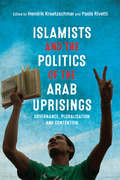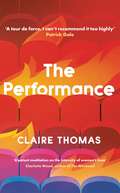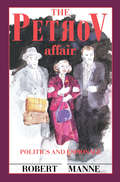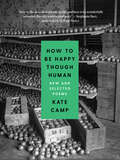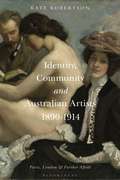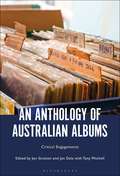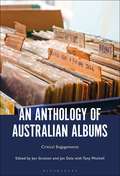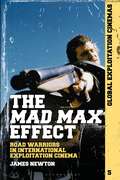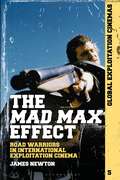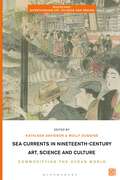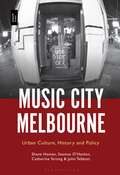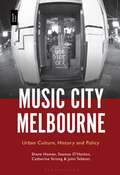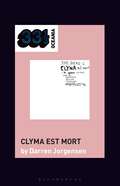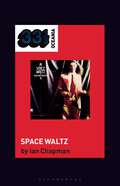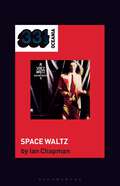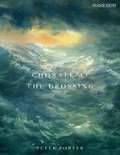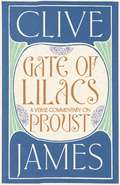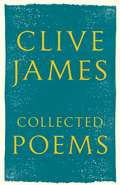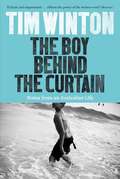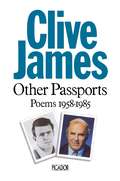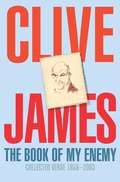- Table View
- List View
Islamists and the Politics of the Arab Uprisings: Governance, Pluralisation and Contention
by Hendrik Kraetzschmar Paola RivettiTraces Scotland's changing townscapes over a thousand years
Islamists and the Politics of the Arab Uprisings: Governance, Pluralisation and Contention (Edinburgh University Press)
by Hendrik Kraetzschmar Paola RivettiDemonstrates how the textual output of settler emigration shapes the nineteenth-century literary and artistic imagination
The Performance: A Novel
by Claire Thomas'A potent meditation on the intensity of women's lives'Charlotte Wood, author of The Weekend'Thomas writes these women with such wisdom and compassion, that by the end we are all transformed'Claire Fuller, author of Bitter Orange'An intimate, intensely brooding novel: at once claustrophobic and yet revelatory. Thomas gently questions the certainties of modern life that so many of us take for granted'Guinevere Glasfurd, author of The Year Without Summer 'Read it as soon as you possibly can'Emily Bitto, author of The Strays The false cold of the theatre makes it hard to imagine the heavy wind outside in the real world, the ash air pressing onto the city from the nearby hills where bushfires are taking hold.The house lights lower.The auditorium feels hopeful in the darkness.As bushfires rage outside the city, three women watch a performance of a Beckett play.Margot is a successful professor, preoccupied by her fraught relationship with her ailing husband. Ivy is a philanthropist with a troubled past, distracted by the snoring man beside her. Summer is a young theatre usher, anxious about the safety of her girlfriend in the fire zone.As the performance unfolds, so does each woman's story. By the time the curtain falls, they will all have a new understanding of the world beyond the stage.
The Petrov Affair: Politics and Espionage
by Robert ManneThe Petrov Affair: Politics and Espionage is a memoir of the Petrov Affair, a historical event that involves the defection of Vladimir Petrov, a colonel in the Soviet intelligence service in Sydney, and the announcement of his defection ten days later by Australian Prime Minister Robert Menzies. With information gathered from different reliable sources, the book details in chronological order the Petrov's defection - the events that occurred before and the factors that led to it; its announcement; and the implications of this event for politics and espionage. The text also explains how the affair affected the Australian people and the world; the conclusion of this event; and the events that happened after it. The book is recommended for historians and history enthusiasts who would want to know more about this particular event. The text is also recommended for experts who delve in the Cold War and the Soviet Union.
How to Be Happy Though Human: New and Selected Poems
by Kate CampA timely collection of new and previously published work by one of New Zealand’s most acclaimed poets, How to Be Happy Though Human introduces Kate Camp’s eclectic and musical poetry to international audiences for the first time.How to Be Happy Though Human: New and Selected Poems is Kate Camp’s seventh book of poetry and the first to be published outside New Zealand. Incorporating a grouping of new, previously unpublished work and a selection of important poems from her six earlier collections, this volume introduces North American readers to poetry that has been described by critics as “fearless,” “mesmerizing,” and “containing a surprising radicalism and power.”Camp’s work is recognized for its wide-ranging and eclectic subject matter, its technical control, and its musicality, with pop culture, high culture, the domestic confessional, close observation, and found language featured as recurring elements of style.A timely retrospective that represents a new chapter in Camp’s career, How to Be Happy Though Human promises to gain a wide readership for this thoughtful, engaging, and popular writer.
Identity, Community & Australian Artists, 1890-1914: Paris, London and Further Afield (Criminal Practice Ser.)
by Kate R. RobertsonAn irresistible call lured Australian artists abroad between 1890 and 1914, a transitional period immediately pre- and post-federation. Travelling enabled an extension of artistic frontiers, and Paris – the centre of art – and London – the heart of the Empire – promised wondrous opportunities. These expatriate artists formed communities based on their common bond to Australia, enacting their Australian-ness in private and public settings. Yet, they also interacted with the broader creative community, fashioning a network of social and professional relationships. They joined ateliers in Paris such as the Académie Julian, clubs like the Chelsea Arts Club in London and visited artist colonies including St Ives in England and Étaples in France. Australian artists persistently sought a sense of belonging, negotiating their identity through activities such as plays, balls, tableaux, parties, dressing-up and, of course, the creation of art. While individual biographies are integral to this study, it is through exploring the connections between them that it offers new insights. Through utilising extensive archival material, much of which has limited or no publication history, this book fills a gap in existing scholarship. It offers a vital exploration re-consideration of the fluidity of identity, place and belonging in the lives and work of Australian artists in this juncture in British-Australian history.
Identity, Community & Australian Artists, 1890-1914: Paris, London and Further Afield
by Kate R. RobertsonAn irresistible call lured Australian artists abroad between 1890 and 1914, a transitional period immediately pre- and post-federation. Travelling enabled an extension of artistic frontiers, and Paris – the centre of art – and London – the heart of the Empire – promised wondrous opportunities. These expatriate artists formed communities based on their common bond to Australia, enacting their Australian-ness in private and public settings. Yet, they also interacted with the broader creative community, fashioning a network of social and professional relationships. They joined ateliers in Paris such as the Académie Julian, clubs like the Chelsea Arts Club in London and visited artist colonies including St Ives in England and Étaples in France. Australian artists persistently sought a sense of belonging, negotiating their identity through activities such as plays, balls, tableaux, parties, dressing-up and, of course, the creation of art. While individual biographies are integral to this study, it is through exploring the connections between them that it offers new insights. Through utilising extensive archival material, much of which has limited or no publication history, this book fills a gap in existing scholarship. It offers a vital exploration re-consideration of the fluidity of identity, place and belonging in the lives and work of Australian artists in this juncture in British-Australian history.
An Anthology of Australian Albums: Critical Engagements
by Tony Mitchell Jon Stratton Jon DaleAn Anthology of Australian Albums offers an overview of Australian popular music through the lens of significant, yet sometimes overlooked, Australian albums. Chapters explore the unique qualities of each album within a broader history of Australian popular music. Artists covered range from the older and non-mainstream yet influential, such as the Missing Links, Wendy Saddington and the Coloured Balls, to those who have achieved very recent success (Courtney Barnett, Dami Im and Flume) and whose work contributes to international pop music (Sia), to the more exploratory or experimental (Curse ov Dialect and A.B. Original). Collectively the albums and artists covered contribute to a view of Australian popular music through the non-canonical, emphasizing albums by women, non-white artists and Indigenous artists, and expanding the focus to include genres outside of rock including hip hop, black metal and country.
An Anthology of Australian Albums: Critical Engagements
An Anthology of Australian Albums offers an overview of Australian popular music through the lens of significant, yet sometimes overlooked, Australian albums. Chapters explore the unique qualities of each album within a broader history of Australian popular music. Artists covered range from the older and non-mainstream yet influential, such as the Missing Links, Wendy Saddington and the Coloured Balls, to those who have achieved very recent success (Courtney Barnett, Dami Im and Flume) and whose work contributes to international pop music (Sia), to the more exploratory or experimental (Curse ov Dialect and A.B. Original). Collectively the albums and artists covered contribute to a view of Australian popular music through the non-canonical, emphasizing albums by women, non-white artists and Indigenous artists, and expanding the focus to include genres outside of rock including hip hop, black metal and country.
The Mad Max Effect: Road Warriors in International Exploitation Cinema (Global Exploitation Cinemas)
by James NewtonThe Mad Max Effect provides an in-depth analysis of the Mad Max series, and how it began as an inventive concoction ofa number of influences from a range of exploitation genres (including the biker movie, the revenge film, and the car chasecinema of the 1970s), to eventually inspiring a fresh cycle of international low budget 'road warrior' movies that appeared on home video in the 1980s.The Mad Max Effect is the first detailed academic study of the most famous and celebrated post-apocalypse film series, andexamines how a humble Australian action movie came from the cultural margins of exploitation cinema to have a profound impact on the broader media landscape.
The Mad Max Effect: Road Warriors in International Exploitation Cinema (Global Exploitation Cinemas)
by James NewtonThe Mad Max Effect provides an in-depth analysis of the Mad Max series, and how it began as an inventive concoction ofa number of influences from a range of exploitation genres (including the biker movie, the revenge film, and the car chasecinema of the 1970s), to eventually inspiring a fresh cycle of international low budget 'road warrior' movies that appeared on home video in the 1980s.The Mad Max Effect is the first detailed academic study of the most famous and celebrated post-apocalypse film series, andexamines how a humble Australian action movie came from the cultural margins of exploitation cinema to have a profound impact on the broader media landscape.
Sea Currents in Nineteenth-Century Art, Science and Culture: Commodifying the Ocean World (Biotechne: Interthinking Art, Science and Design)
How did scientists, artists, designers, manufacturers and amateur enthusiasts experience and value the sea and its products? Examining the commoditization of the ocean world during the nineteenth century, this book demonstrates how the transaction of oceanic objects inspired a multifaceted material discourse stemming from scientific exploration, colonial expansion, industrialization, and the rise of middle-class leisure. From the seashore to the seabed, marine organisms and environments, made tangible through processing and representational technologies, captivated practitioners and audiences. Combining essays and case studies by scholars, curators, and scientists, Sea Currents investigates the collecting and display, illustration and ornamentation, and trade and consumption of marine flora and fauna, analysing their material, aesthetic and commercial dimensions. Traversing global art history, the history of science, empire studies, anthropology, ecocriticism and material culture, this book surveys the currency of marine matter embedded in the economies and ecologies of a modernizing ocean world.
Sea Currents in Nineteenth-Century Art, Science and Culture: Commodifying the Ocean World (Biotechne: Interthinking Art, Science and Design)
by Kathleen Davidson and Molly DugginsHow did scientists, artists, designers, manufacturers and amateur enthusiasts experience and value the sea and its products? Examining the commoditization of the ocean world during the nineteenth century, this book demonstrates how the transaction of oceanic objects inspired a multifaceted material discourse stemming from scientific exploration, colonial expansion, industrialization, and the rise of middle-class leisure. From the seashore to the seabed, marine organisms and environments, made tangible through processing and representational technologies, captivated practitioners and audiences. Combining essays and case studies by scholars, curators, and scientists, Sea Currents investigates the collecting and display, illustration and ornamentation, and trade and consumption of marine flora and fauna, analysing their material, aesthetic and commercial dimensions. Traversing global art history, the history of science, empire studies, anthropology, ecocriticism and material culture, this book surveys the currency of marine matter embedded in the economies and ecologies of a modernizing ocean world.
Music City Melbourne: Urban Culture, History and Policy
by Shane Homan Seamus O’Hanlon Catherine Strong John TebbuttHow did Melbourne earn its place as one of the world's 'music cities'? Beginning with the arrival of rock 'n' roll in the 1950s, this book explores the development of different sectors of Melbourne's popular music ecosystem in parallel with broader population, urban planning and media industry changes in the city. The authors draw on interviews with Melbourne musicians, venue owners and policy-makers, documenting their ambitions and experiences across different periods, with accompanying spotlights on the gendered, multicultural and indigenous contexts of playing and recording in Melbourne. Focusing on pop and rock, this is the first book to provide an extensive historical lens of popular music within an urban cultural economy that in turn investigates the contemporary nature and challenges of urban music activities and policy.
Music City Melbourne: Urban Culture, History and Policy
by Shane Homan Seamus O’Hanlon Catherine Strong John TebbuttHow did Melbourne earn its place as one of the world's 'music cities'? Beginning with the arrival of rock 'n' roll in the 1950s, this book explores the development of different sectors of Melbourne's popular music ecosystem in parallel with broader population, urban planning and media industry changes in the city. The authors draw on interviews with Melbourne musicians, venue owners and policy-makers, documenting their ambitions and experiences across different periods, with accompanying spotlights on the gendered, multicultural and indigenous contexts of playing and recording in Melbourne. Focusing on pop and rock, this is the first book to provide an extensive historical lens of popular music within an urban cultural economy that in turn investigates the contemporary nature and challenges of urban music activities and policy.
The Dead C’s Clyma est mort (33 1/3 Oceania)
by Darren JorgensenThe Dead C's Clyma est mort (1993) is the record of a live gig for one person. Tom Lax was running the Siltbreeze label in Philadelphia and had come to New Zealand to meet the artists he was releasing. He heard The Dead C at their noisy, improvised best, turning rock music on its head with a free-form style of blaring, loosely organised sound. Leading a second wave of music from Dunedin, New Zealand, The Dead C were an assault against the kind of jangly pop that had made the Dunedin Sound famous during the 1980s. This book uses The Dead C and in particular their album Clyma est mort (1993) to offer insights into the way the best of rock music plays vertigo with our senses, illustrating a sonic picture of freedom and energy. It places the album into the history of independent music in New Zealand, and into an international context of independent labels posting, faxing and phoning each other.
The Dead C’s Clyma est mort (33 1/3 Oceania)
by Darren JorgensenThe Dead C's Clyma est mort (1993) is the record of a live gig for one person. Tom Lax was running the Siltbreeze label in Philadelphia and had come to New Zealand to meet the artists he was releasing. He heard The Dead C at their noisy, improvised best, turning rock music on its head with a free-form style of blaring, loosely organised sound. Leading a second wave of music from Dunedin, New Zealand, The Dead C were an assault against the kind of jangly pop that had made the Dunedin Sound famous during the 1980s. This book uses The Dead C and in particular their album Clyma est mort (1993) to offer insights into the way the best of rock music plays vertigo with our senses, illustrating a sonic picture of freedom and energy. It places the album into the history of independent music in New Zealand, and into an international context of independent labels posting, faxing and phoning each other.
Alastair Riddell’s Space Waltz (33 1/3 Oceania)
by Ian ChapmanAlastair Riddell's band Space Waltz was a short-lived one-album New Zealand rock act who hit gold with a #1 hit single in October 1974 with the song 'Out On The Street' but thereafter failed to achieve anything even close to that feat. While relegated to one-hit-wonder status in the eyes of many, to this day Riddell and Space Waltz epitomize the mid-1970s heyday of glam rock in New Zealand. But in truth their impact went far beyond this. Their generationally divisive nation-wide debut on the hugely popular MOR television talent quest Studio One/New Faces demonstrated the power of mass media exposure – they were instantly signed to a record deal with industry giant EMI – while Riddell's controversial gender-bending image provided a cultural crossroads that greatly impacted the wider youth culture of Aotearoa New Zealand. In addition, while the album's most famous track, 'Out On The Street,' is rightly regarded as New Zealand's glam rock anthem, the wider album demonstrates a compositional and musical depth that goes far beyond glam rock and into the realm of sophisticated progressive rock, ultimately providing an unlikely and highly unique musical amalgam.
Alastair Riddell’s Space Waltz (33 1/3 Oceania)
by Ian ChapmanAlastair Riddell's band Space Waltz was a short-lived one-album New Zealand rock act who hit gold with a #1 hit single in October 1974 with the song 'Out On The Street' but thereafter failed to achieve anything even close to that feat. While relegated to one-hit-wonder status in the eyes of many, to this day Riddell and Space Waltz epitomize the mid-1970s heyday of glam rock in New Zealand. But in truth their impact went far beyond this. Their generationally divisive nation-wide debut on the hugely popular MOR television talent quest Studio One/New Faces demonstrated the power of mass media exposure – they were instantly signed to a record deal with industry giant EMI – while Riddell's controversial gender-bending image provided a cultural crossroads that greatly impacted the wider youth culture of Aotearoa New Zealand. In addition, while the album's most famous track, 'Out On The Street,' is rightly regarded as New Zealand's glam rock anthem, the wider album demonstrates a compositional and musical depth that goes far beyond glam rock and into the realm of sophisticated progressive rock, ultimately providing an unlikely and highly unique musical amalgam.
Chorale at the Crossing
by Peter PorterWhen Peter Porter died in 2010 his reputation as one of the greatest Australian poets had long been settled. Chorale at the Crossing gathers together the work Porter completed after the publication of his widely-praised final collection Better than God, and shows a remarkable and capacious mind - apparently furnished with half the contents of Western culture - still working at full tilt, despite the imminence of his own passing. Chorale at the Crossing contains love poems, comic excursions, and meditations on art, death, music and nature, all written with Porter's phenomenal technical facility and immense good humour. Chorale at the Crossing is the last word from one of our wisest and most compassionate poets - and is, quite simply, necessary reading.
Gate of Lilacs: A Verse Commentary on Proust
by Clive JamesOver a period of fifteen years Clive James learned French by almost no other method than reading À la recherche du temps perdu. Then he spent half a century trying to get up to speed with Proust's great novel in two different languages. Gate of Lilacs is the unique product of James's love and engagement with Proust's eternal masterpiece. With À la recherche du temps perdu, Proust, in James's words, 'followed his creative instinct all the way until his breath gave out', and now James has done the same. In Gate of Lilacs, James, a brilliant critical essayist and poet, has blended the two forms into one.I had always thought the critical essay and the poem were closely related forms . . . If I wanted to talk about Proust's poetry beyond the basic level of talking about his language - if I wanted to talk about the poetry of his thought - then the best way to do it might be to write a poem.There is nothing like a poem for transmitting a mental flavour. Instead of trying to describe it, you can evoke it. In the end, if À la recherche du temps perdu is a book devoted almost entirely to its author's gratitude for life, for love, and for art, this much smaller book is devoted to its author's gratitude for Proust.
Collected Poems: 1958 - 2015
by Clive JamesClive James's reputation as a poet has become impossible to ignore. His poems looking back over his extraordinarily rich life with a clear-eyed and unflinching honesty, such as 'Japanese Maple' (first published in the New Yorker in 2014), became global news events upon their publication. In this book, James makes his own rich selection from over fifty years' work in verse: from his early satires to these heart-stopping valedictory poems, he proves himself to be as well suited to the intense demands of the tight lyric as he is to the longer mock-epic. Collected Poems displays James's fluency and apparently effortless style, his technical skill and thematic scope, his lightly worn erudition and his emotional power; it will undoubtedly cement his reputation as one of the most versatile and accomplished of contemporary writers.
The Boy Behind the Curtain: Notes From an Australian Life
by Tim Winton'Eclectic and impassioned, a collection that affirms the power of the written word' ObserverThe Boy Behind the Curtain is a portrait of a life, a place and a man. In this deeply personal collection of true stories and essays Tim Winton shows how moments from his childhood and life growing up have shaped his views on class, faith, fundamentalism, the environment, and - most pressingly - how all his experiences have made him a writer. From unexpected links between car crashes and faith, surfing and writing, to the story of his upbringing in the changing Australian landscape, The Boy Behind the Curtain is an impassioned, funny, joyous, astonishing collection of memories, and Winton's most personal book to date.
Other Passports: Poems 1958-1985 (Picador Bks.)
by Clive JamesClive James's unforgettable poetry collection, which gained him comparison to Byron and status as a 'true poet' demonstrates his wide range of interests and knowledge while never compromising his trademark wit and humour. Other Passports explores his lyrical style of poetry, alongside parodies, imitations and lampoons.
The Book of My Enemy: Collected Verse 1958-2003
by Clive JamesThe reputation of Clive James as a poet was slow to form, perhaps because he was too famous as a star journalist and television entertainer. There was also the drawback that his poetry was so entertaining it was hard for many critics to take seriously. But after the notoriety achieved by a single self-satirizing poem, ‘The Book of My Enemy Has Been Remaindered’, one of the most anthologized poems of recent times, James’s poetic output became impossible to ignore, and his 1985 collection Other Passports was greeted with praise for its thematic scope and technical accomplishment, even by critics who still doubted his seriousness. Since then, James has emerged unarguably as one of the most prominent poets of his generation – and The Book of My Enemy (which includes Other Passports) shows why.
